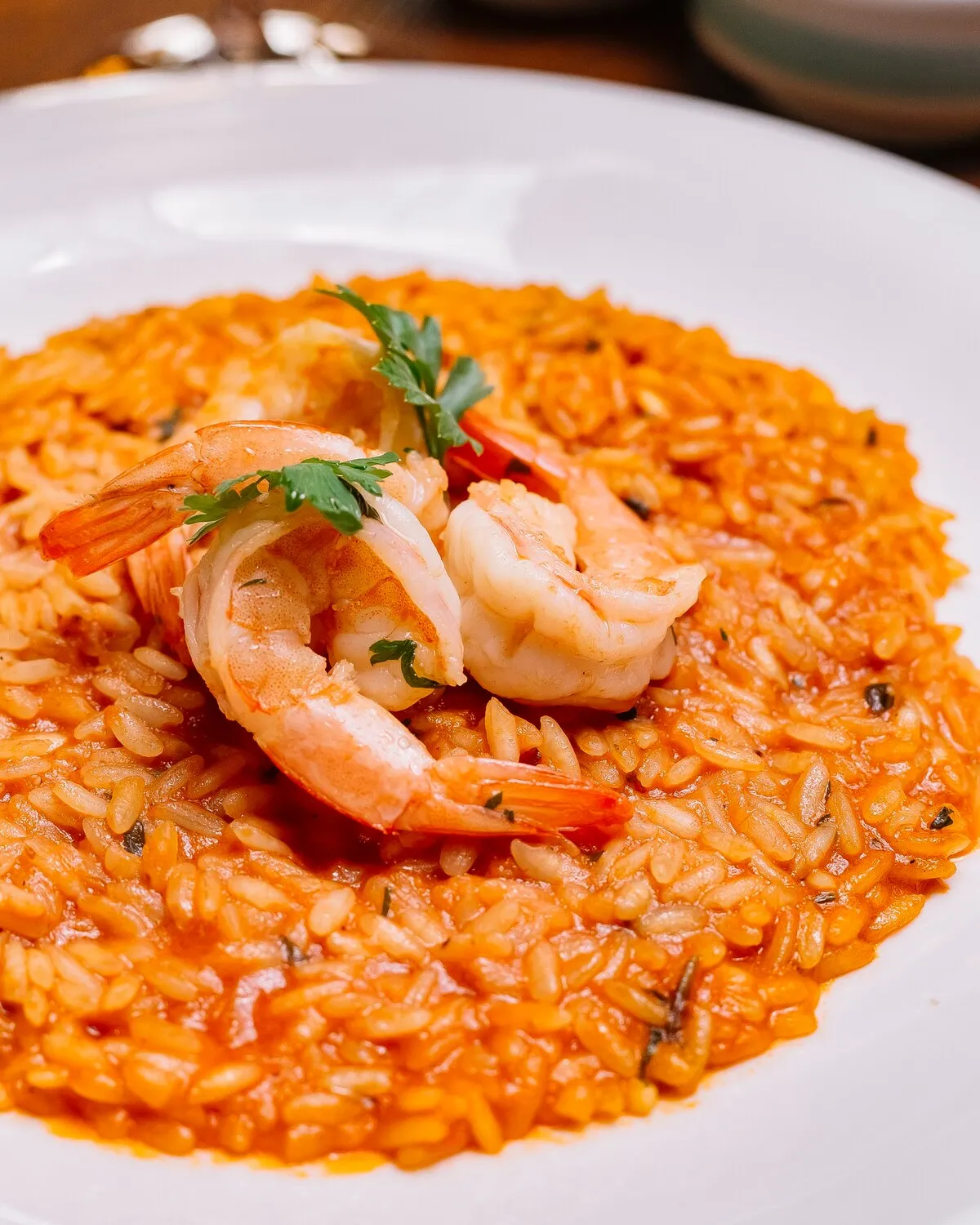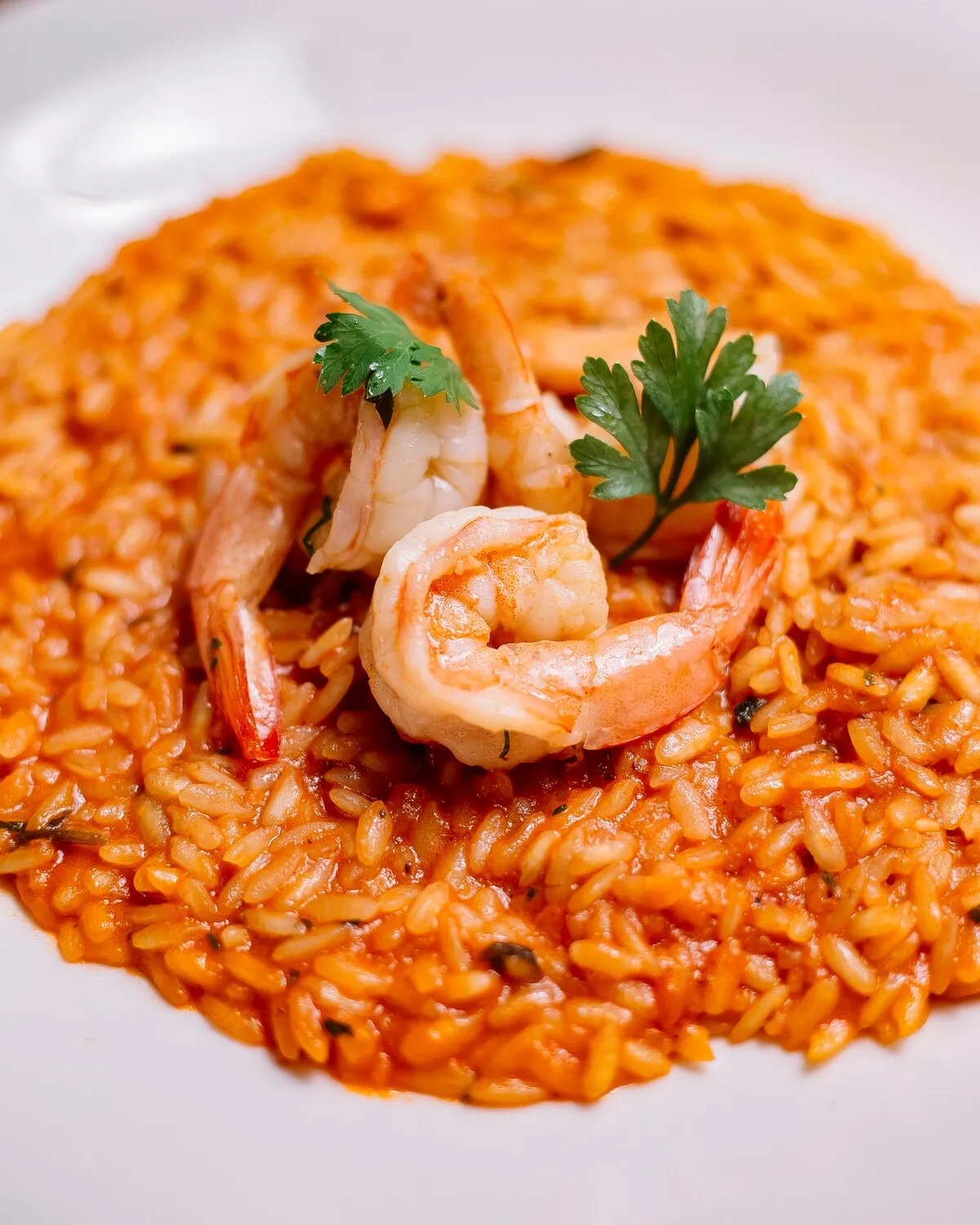
Risotto ai frutti di mare
Seafood risotto.
Nutrition Facts
* The % Daily Value (DV) tells you how much a nutrient in a serving of food contributes to a daily diet. 2,000 calories a day is used for general nutrition advice.
Paradisiculo
Risotto's origins lie in Northern Italy, specifically the Po Valley, known for its rice cultivation since the Middle Ages. Rice was introduced to Italy by the Arabs, and risotto evolved over centuries, influenced by local ingredients and culinary traditions. The addition of seafood became popular along the coastal regions, utilizing the fresh catches from the Mediterranean Sea.
Risotto ai frutti di mare is often enjoyed as a special occasion dish, reflecting the abundance of the sea and the artistry of Italian cuisine. It represents a celebration of fresh, local ingredients and the importance of sharing a meal with loved ones.
Regional Variations
Different coastal regions in Italy feature their own unique variations of risotto ai frutti di mare, reflecting the locally available seafood and culinary preferences. Some regions might emphasize clams and mussels, while others might feature shrimp and scallops.
Celebratory Meal
It is often served during holidays, family gatherings, or special occasions to celebrate the richness and flavors of Italian cuisine, such as Christmas Eve (La Vigilia).
Slow Food Movement
The dish aligns with the Slow Food movement principles by using fresh, local ingredients and emphasizing the importance of savoring the cooking and eating process.
Risotto ai frutti di mare is characterized by its creamy texture and the pronounced flavors of the sea, complemented by the savory notes of broth and aromatics.
The dominant flavors are derived from the seafood itself, which can include a combination of shrimp, mussels, clams, squid, scallops, and sometimes lobster or crab. These provide a salty, briny taste with varying textures. The broth, typically fish or seafood-based, infuses the rice with a deep umami flavor. Garlic, white wine, parsley, and sometimes a touch of tomato add layers of complexity, balancing the richness of the seafood with brightness and acidity. The creamy texture comes from the starch released by the Arborio rice during slow cooking with broth.
Rice Selection
Use a short-grain rice variety like Arborio, Carnaroli, or Vialone Nano. These rices have a high starch content, which is essential for creating the creamy texture of risotto.
Broth Temperature
Keep the broth simmering gently on the stovetop while you're cooking the risotto. Adding cold broth will lower the temperature of the rice and disrupt the cooking process.
Stirring Technique
Stir the rice frequently, but not constantly. Stirring helps release the starch and creates the creamy texture, but over-stirring can make the risotto gluey. Aim for a gentle, consistent stirring motion.
Adding Seafood
Add the seafood towards the end of the cooking process, as it cooks quickly and can become rubbery if overcooked. Adjust cooking times based on the type of seafood used.
Explore additional Risotto dishes and restaurants
Explore RisottoDiscover top dining spots and culinary experiences in Messina.
Explore MessinaLearn more about the food culture, restaurant scene, and culinary heritage of Italy.
Explore Italy
